New creative cultures: in conversation with Dubai’s acclaimed female designers
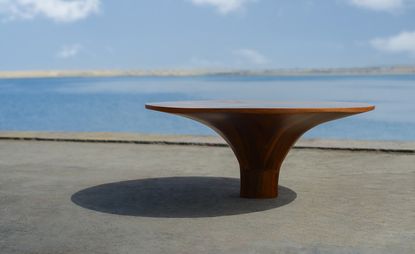
It’s a good time to be a designer in Dubai, with increased support from both the public and private sectors. Initiatives such as the five year-old Design Days Dubai fair, the establishment of the Dubai Design District and Design Week have all contributed to a robust cultural ecosystem. With that, a growing crop of emerging local and UAE-based designers is being cultivated and they are making waves, not least for being young pioneers or women for that matter, nor for their fusion of tradition and modernity, but rather for their ability to wear many hats: as visual artists, designers and architects.
'There’s a very strong female presence and there’s a lot of support for that. It’s hard for me to think about how being female affects my identity as a designer,' says Rand Abdul Jabbar, an Iraqi-born designer with architecture degrees from the universities of Dalhousie and Columbia. 'There is a sense of support and a discourse around design more than architecture. What’s lacking is constructive criticism.'
Zaha Hadid was Abdul Jabbar’s primary source of inspiration and she completed two internships at the late architect’s firm. Raised between the UAE and Canada, Abdul Jabbar created 'Forma' in 2015, a chair and table derived from sectional templates of the traditional dhow ship, the construction method of which is passed on orally. 'The dhow is a national icon, but at the same time, the spaces that support this craft are being threatened,' she says. 'I wanted to shed light on this beautiful craft in a different way. A chair goes back to this idea of habitation.'
Talin Hazbar, a Syrian-born designer who was raised in Sharjah, also took inspiration from a traditional element: the desert. 'I was interested in it as a landscape. It’s an alive but dead space. I am also intrigued by the behaviour of sand,' she says. 'Sand is delicate and by its own nature, wants to do something else.'
Being a woman, she says, is a non-issue in Dubai; 'I feel the city’s support, there are so many opportunities,' says Hazbar, who took part in Design Days Dubai 2015 and the Sheikha Salama bint Hamdan Al Nahyan Foundation Fellowship programme in collaboration with the Rhode Island School of Design in the same year. Later this year, she joins three other UAE-based designers who have each been commissioned by the Abu Dhabi government to create artworks and installations for the opening of a rather notable local unveiling.
Hazbar’s colleague in this initiative is the Emirati-born Zeinab Al Hashemi, who will be working on an installation using glassblowing as a technique. She has also been commissioned by Swarovski to create a work using the house’s crystals but will incorporate elements from Emirati heritage. 'My work is so affected by design and design solutions, and I emphasise the use of Emirati materials,' says Al Hashemi, who has created a sand dune made of camel hide for the biennial 'Emirati Expressions' exhibition in 2015 and a rug made of treated camel leather for Design Days Dubai the year before.
'It’s amazing to be recognised by a lot of influencers and I wouldn’t be where I am today had I not been in and for Dubai,' says Al Hashemi. 'But I think now is a critical time as I wonder what’s next for me? Dubai’s done a great job of promoting me locally and regionally but I’m curious and nervous about the international arena. At this point I need time and guidance.'
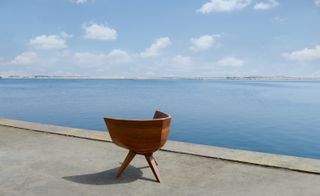
'Forma' comprises a chair and table derived from sectional templates of the traditional dhow, the construction method of which is passed on orally

Talin Hazbar, a Syrian-born designer who was raised in Sharjah, also took inspiration from a traditional element: the desert. Pictured: To The Desert,

Tranquility Nodes (pictured left) and Reconstructed Veins (right),
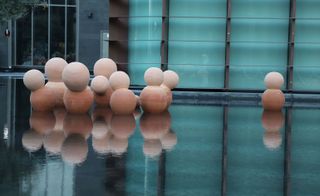
Later this year, Talin Hazbar joins three other UAE-based designers who have each been commissioned to create artworks and installations for the opening of a notable Abu Dhabi museum. Pictured: Earth Hives by Talin Hazbar and Latifa Saeed for Dubai Design Week 2015
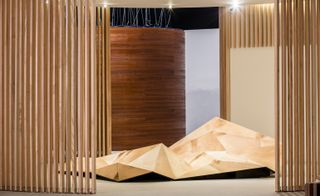
Emirati-born Zeinab Al Hashemi has also been commissioned by Swarovski to create a work using the house’s crystals but will incorporate elements from Emirati heritage.
Wallpaper* Newsletter
Receive our daily digest of inspiration, escapism and design stories from around the world direct to your inbox
-
 The moments fashion met art at the 60th Venice Biennale
The moments fashion met art at the 60th Venice BiennaleThe best fashion moments at the 2024 Venice Biennale, with happenings from Dior, Golden Goose, Balenciaga, Burberry and more
By Jack Moss Published
-
 Crispin at Studio Voltaire, in Clapham, is a feast for all the senses
Crispin at Studio Voltaire, in Clapham, is a feast for all the sensesNew restaurant Crispin at Studio Voltaire is the latest opening from the brains behind Bistro Freddie and Bar Crispin, with interiors by Jermaine Gallagher
By Billie Brand Published
-
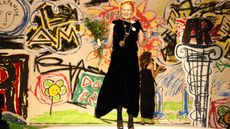 Vivienne Westwood’s personal wardrobe goes up for sale in landmark Christie’s auction
Vivienne Westwood’s personal wardrobe goes up for sale in landmark Christie’s auctionThe proceeds of ’Vivienne Westwood: The Personal Collection’, running this June, will go to the charitable causes she championed during her lifetime
By Jack Moss Published
-
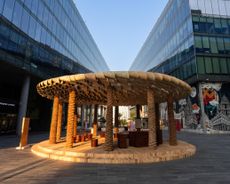 Dubai Design Week 2023 spotlights sustainability, culture and tech
Dubai Design Week 2023 spotlights sustainability, culture and techDubai Design Week 2023 gathered nearly 500 designers, architects and creatives, offering a confluence of Middle Eastern and international design
By Rebecca Anne Proctor Published
-
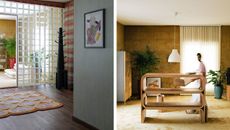 Dubai Design Week 2022: a meeting of international brands and local talent
Dubai Design Week 2022: a meeting of international brands and local talentDubai Design Week 2022 returns with exhibitions at Downtown Design and the d3 Design District, highlighting emerging talent and sustainable approaches
By Laura May Todd Published
-
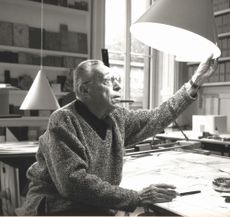 Design legacy: remembering Italian innovator Achille Castiglioni
Design legacy: remembering Italian innovator Achille CastiglioniBy Caroline Roux Published